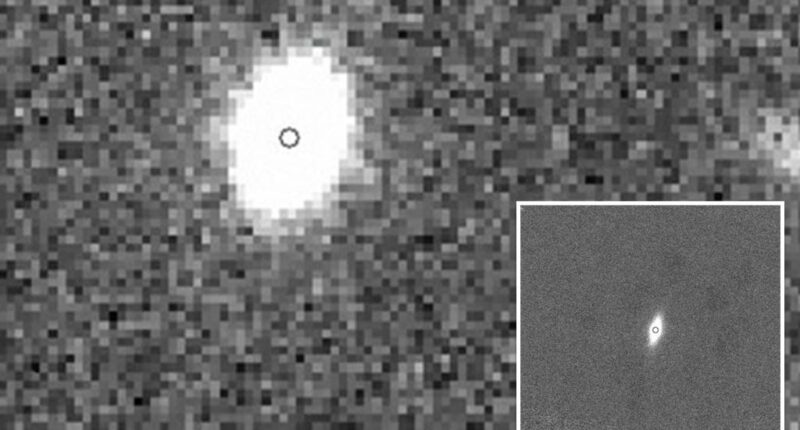Share this @internewscast.com

An Italian team of astronomers has identified a fossil galaxy located approximately 3 billion light-years from Earth, marking it as the most remote example of its type beyond our local universe.
Named KiDS J0842+0059, this ancient galaxy was discovered by the Italian National Institute for Astrophysics utilizing the Large Binocular Telescope situated on Mount Graham in Arizona.
This telescope is specifically designed to spot stars and planets beyond Earth’s solar system. However, despite its advanced capabilities, sometimes it simply requires time for the light from such distant objects to become detectable.
And even when the light does reach nearby systems, scientists noted that there are still a laundry list of factors that could outright erase the would-be discovery.
“Relic galaxies, just by chance, did not merge with any other galaxy, remaining more or less intact through time. These objects are very rare because, as time goes on, the probability to merge with another galaxy naturally increases,” Crescenzo Tortora, a researcher at INAF and first author of a study on the finding, told CNN.
The formation of a galaxy requires an “early burst of star formation” that leaves “the progenitor of this relic” in its wake, according to study coauthor Chiara Spiniello, a researcher at the University of Oxford in the UK.
A relic in these terms is an object that has “formed at least 75% of its mass in the first phase” and almost entirely skips the second, Spiniello told the outlet.
The coveted second phase that the fossil galaxy virtually skipped takes place when nearby galaxies begin to interact with one another. In this, the galaxies sometimes combine or swallow up one another, which can change entire shapes, sizes, and star populations.
The standalone fossil galaxies are typically ancient, compact and dense. They hold their own stars and even planets that are likely just much closer together than they are in Earth’s.
“They contain [billions] of stars as massive as the sun and they are not forming any new stars — they’re doing essentially nothing, and they are the fossil records of the very ancient universe. They formed when the universe was really, really young. And then, for some reasons that we honestly don’t understand yet, they did not interact. They didn’t merge with other systems. They evolved undisturbed, and they remained as they were,” Spiniello explained.
It’s unclear why fossil galaxies skipped the second phase that usually forces the entities to interact. Some scientists have suggested that supermassive black holes could’ve created strong winds that isolated the galaxies or prevented more stars from forming.
The new galaxy, because of how far away it is, looks to observers exactly as it did when it was first created 3 billion years ago as that’s how long it takes for light from that entity to reach Earth.
Spiniello is hopeful that the galaxy will remain stagnant forever, but can’t be certain since scientists still aren’t sure what prevents it from interacting with other galaxies.
















